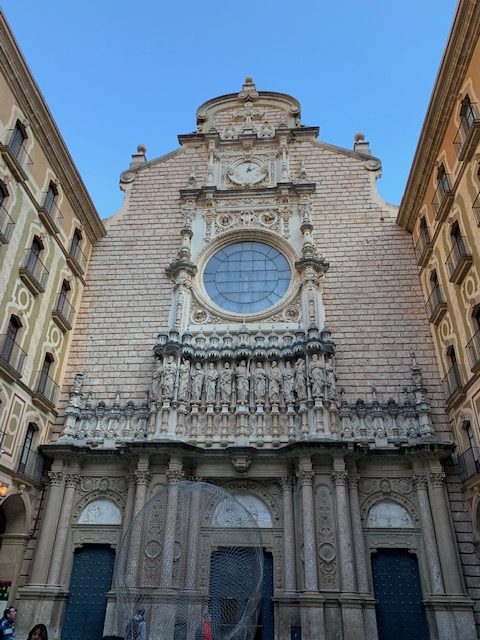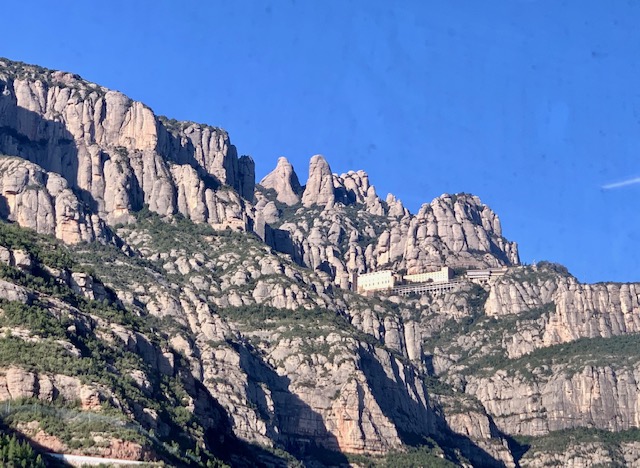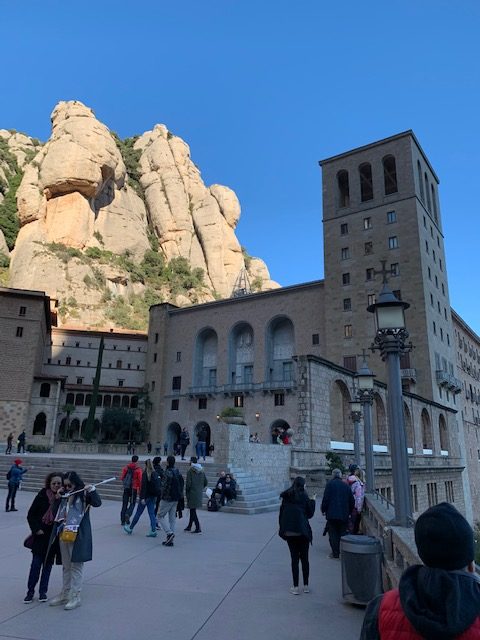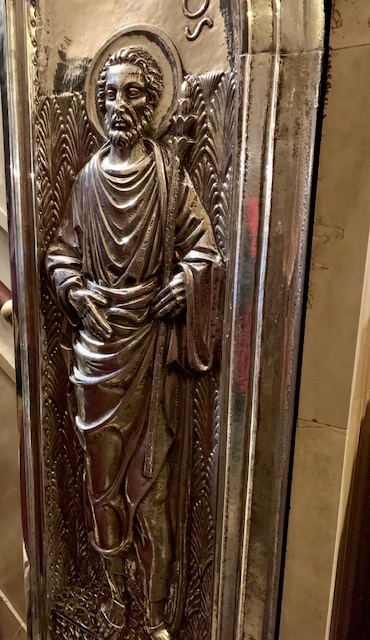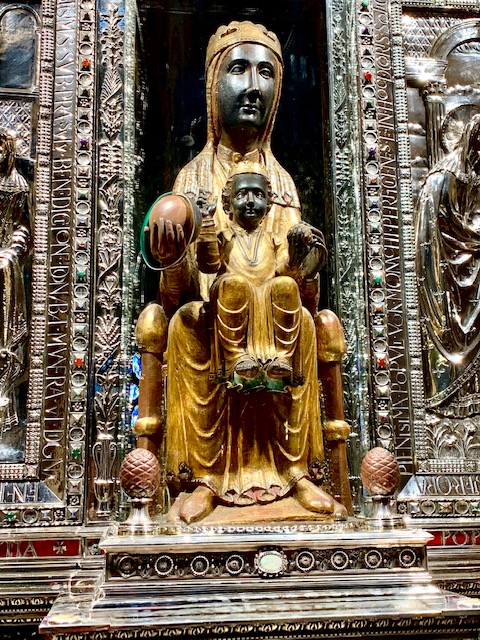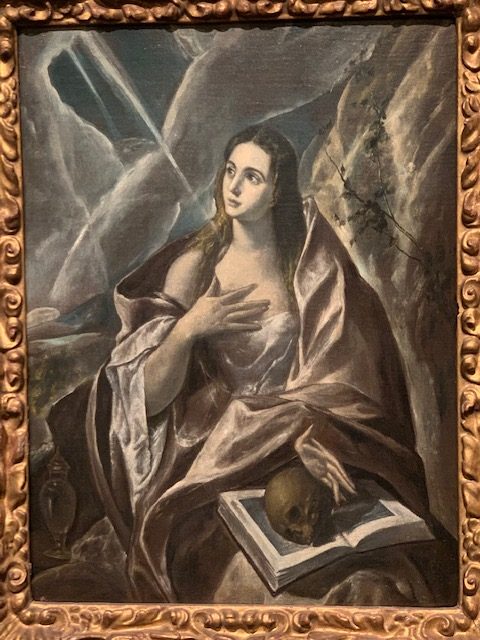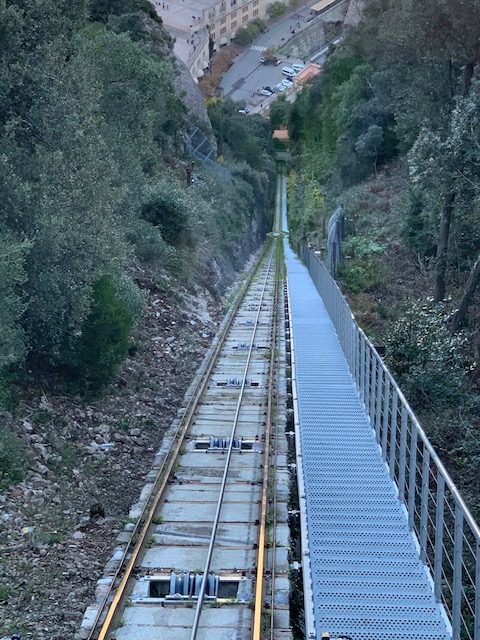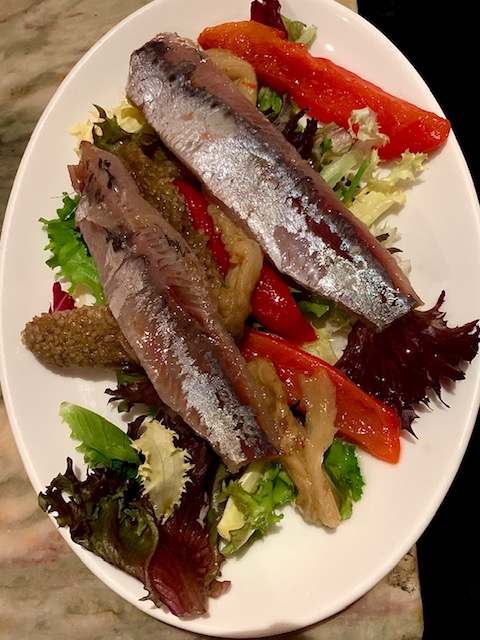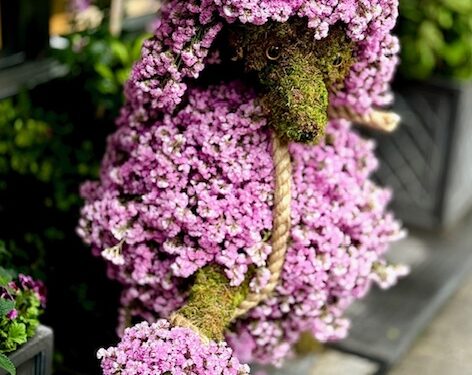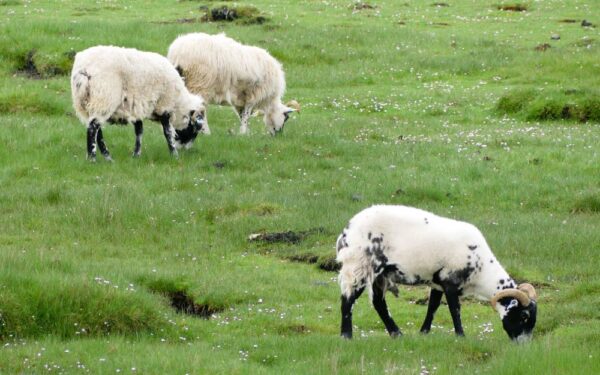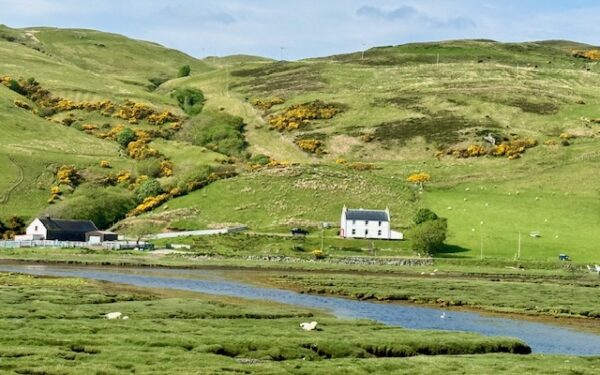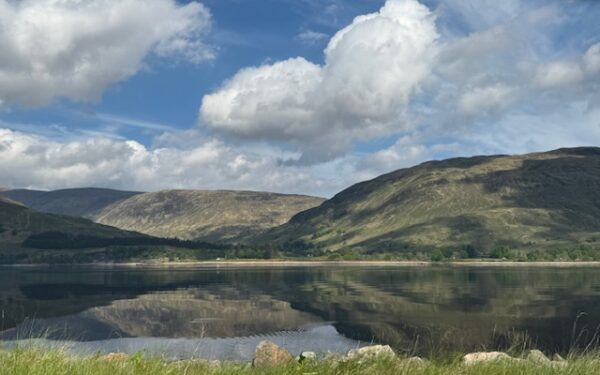“Faith moves mountains, but you have to keep pushing while you are praying. “ Mason Cooley, an American aphorist

This morning, all bundled up, the rain stopped, but a cold snap had hit the area as we headed for the serrated mountain that is known as Montserrat. Its actual full name is Santa Maria de Montserratis Basilica (minor) and is an hour’s train ride outside Barcelona.
Once arriving at Montserrat train station, we had to jump onto another train to get up the mountaintop. To put it in perspective for those of you that have been to The Getty Museum, just make the tram twice as long with a 20 minute ride with an elevation change of about 2,000 feet as it curves and winds its way up. The ride is smooth, but it clings to the mountainside all the way; the views are magnificent.
At the top I was expecting just the basílica and monastery and not an actual mini-city; besides the previously mentioned buildings, it contains hotels, mini-markets, several restaurants, museum, offices, et al … after all it’s a pilmigrage site and it must accommodate the masses.
The Basilica enshrines the image of Our Lady of Montserrat, popularly known as La Moreneta, (the Dark One). She’s a 12th-century Romanesque polychrome carving; legends place the story of the Virgin of Montserrat to around the eighth century.
Long lines of pilgrims and believers wait for hours at a time to come into the presence of the virgin … fortunately, ours was a short 15 minutes. You’re led by the side transepts up a set of stairs, to just above the main altar where the room of the Virgin is located. It’s accessed after crossing a portal of alabaster (Porta Angèlica), flanked by two massive silver doors representing various biblical scenes. The mosaics on the walls represent the Saints, Mothers and Vírgins.
Next comes the Throne Room as I am now standing in front of the Black Madonna, my body filled with goose bumps. I felt stuck in time, when in actuality it was a few precious seconds to bow, touch the glass enclosure and say a private prayer. The Madonna’s altar is embossed in silver and precious stones and sits on top of Venetian mosaics.
The exit of the room is carried out by the somber Camí de l’Ave Maria, where it is customary to make offerings in the form of candles. I lit a candle in remembrance of all those loved ones that are no longer with us (it is Thanksgiving week); that I know are keeping a close watch over me.
One of the surprising finds up on this serrated mountaintop was its small art museum. The majority of its precious collection of mostly Catalonian artists has been donated by its wealthy patrons; the artists all well recognized names: Rusiñol, Casas, Nonell, Mir, Dalí, Miró and Tàpies and non-Catalans like Picasso, El Greco, Giordano, Tiepolo and French impressionists Renoir, Monet, and Degas. David happily scored another exquisite Caravaggio painting, this an important St. Jerome.
It also contains a very interesting section in archeology with biblical objects of Egypt, Cyprus, Mesopotamia and the Holy Land; including a centuries old Torah. It is one the best small museums that I have visited in terms of the collection’s unique diversity.
But the day was not over yet ~ there was still the opportunity to climb even higher to the top of Montserrat on the Sant Joan Funicular at 3,200 feet above sea level. The funicular travels up the mountain at a 65% gradient (think of it as a reclining elevator) and offers breathtaking views of Montserrat and its surroundings. David asked, “Are we going up the mountain in that?!” The incline can be daunting yet exciting at the same time. We’d go up, take photos and soon come down … “Veni, vidi, vici.”
Montserrat has seen its share of political strife over the centuries. Since the 1940’s, Santa Maria de Montserrat Abbey is often seen as a symbol of Catalan nationalism and has been a sanctuary for scholars, artists, politicians and students. That symbol is more alive now than ever as Catalunya is demanding more autonomy from Spain. Our stay in Barcelona was quiet when only just recently turmoil had erupted.
Skeptics might not believe me, but I can’t explain my emotional feelings during my visits to these sacred pilgrim sites. Don’t know if they’re my own sense of beliefs, faith, convictions or it’s just that I absorb from the spiritual energy surrounding me at these sites that amplifies my emotions.
On the Menu … Pinxos of course … a selection found at a cozy, local hangout close by our apartment: hummus, sardines, smoked salmon bocadillo, empanada gallega, (usually tuna filled and baked on a cookie sheet pan), pan con tomate, patatas bravas … all washed down with the local beer on tap.
